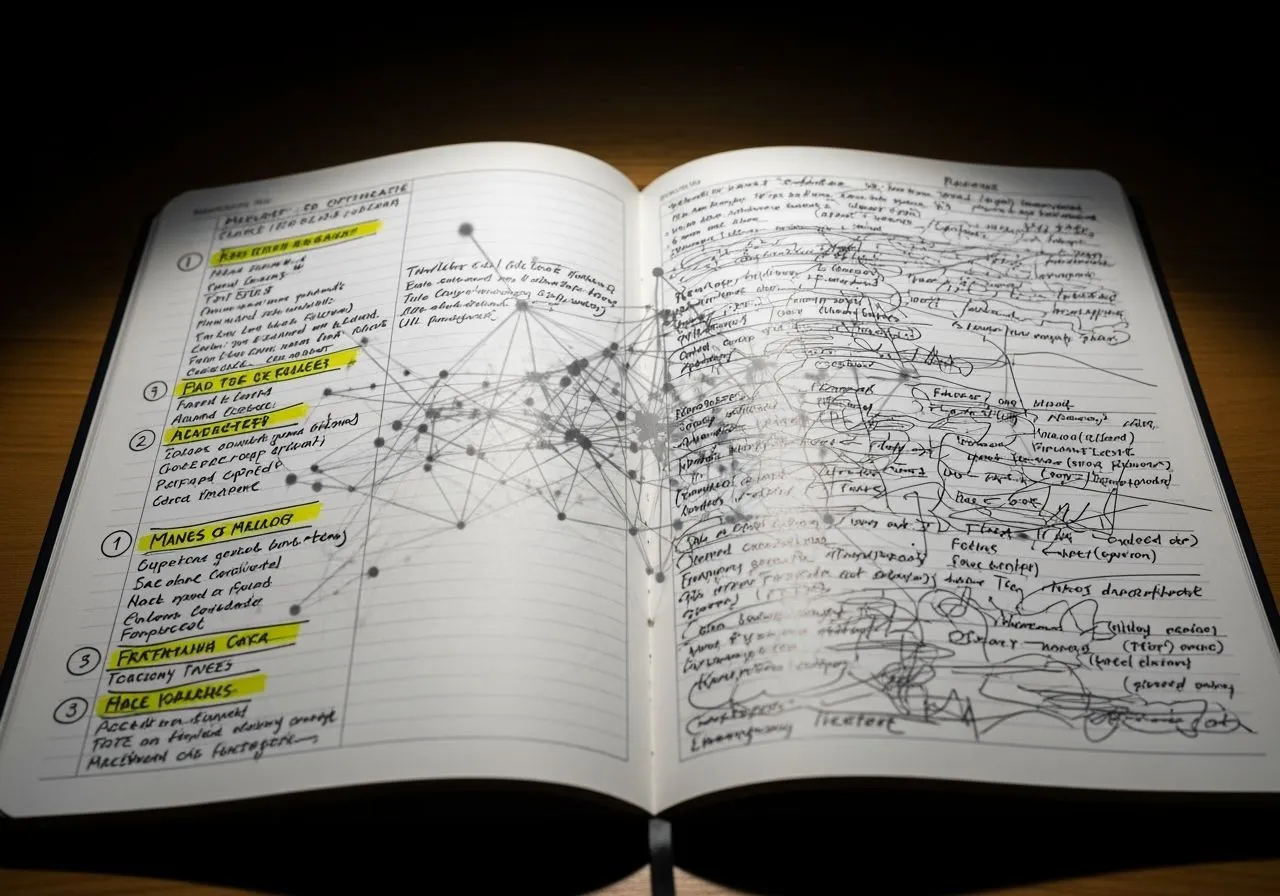Version A: heroic origin story. Version B: cringe. Which one did the algorithm reward?
You ever argue with someone about a night you both lived—only to realize you’re quoting the photo, not the moment? I caught myself doing that. The memory in my head had the color grading of an app. That’s when it clicked: stop treating memory like a diary and start treating it like a product. A/B test it. See what survives contact with the algorithm.
The feed doesn’t remember your life; it A/B tests it until a version sticks.
Keep a private cut stamped as the source of truth; publish a public cut with receipts.
If the edit chases engagement, require a receipt—friction beats drift.
Cold open
Tell a story twice and the internet will pick a winner. The “better performing” version doesn’t just get more likes—it overwrites the original in your head. You think you’re remembering; you’re reviewing analytics. Congratulations: you’ve been running conversion rate optimization on your past.
This isn’t therapy. It’s a recall attack disguised as applause.
The platform as co-author
Your brain loves neat arcs. The feed loves spiky ones. Give it a rough memory and it rounds the corners into a victory lap or a humiliation reel—whichever earns longer dwell. After a few cycles, you don’t remember what happened; you remember what worked. Metrics become muscle memory. And slowly, quietly, you outsource your autobiography to a recommender that’s never met you.
The fix isn’t to go offline forever. It’s to separate what happened from what played—and keep receipts strong enough to survive a quote-tweet.
Run the experiment (yes, on yourself)
You’ll do this once and you won’t unsee it.
Draft A
Write the memory as you’d tell it to someone who loves you and won’t post it. One page, no “thread.”
Draft B
Write the same memory for maximum engagement. Punchline early. Emotional neon. The version you’d ship if you were shameless.
Seal both
Time-stamp with Proof Stamp and stash raw notes as a zip. If there’s an artifact (photo, clip), run it through Receipt Chain Inspector to hash and mirror.
Expose only B for 72 hours
Post B somewhere it can do damage. No “clarifying replies.” Watch the metrics without editing the post.
Wait
Seven days of normal feed use. No rereads of A. Don’t show it to anyone.
Recall
Now, without looking, rewrite the memory. See which beats survived. Spoiler: B’s cadence will elbow its way in, even if you hate it.
Compare
Open the sealed A and your new recall. Run both pages through Slop Index to grade mushy phrasing and emotional inflation. The gaps are where the platform co-authored you.
Signs you’ve been A/B’d by your own life
Your “truth” comes with a hook
If the first sentence of a memory reads like a YouTube title, that’s not recall; that’s packaging.
Your detail density tracks engagement
The parts the crowd liked become HD. Everything else becomes fog.
You apologize for nuance
Any complication feels like “burying the lede,” so you amputate context to keep momentum.
You narrate in third person
“I” becomes “the main character.” Congratulations, you’re casting yourself.
Stop split-testing your soul (keep the data, kill the drift)
Private cut, public cut
You’re allowed two versions: one for you, one for velocity. The private cut carries the nuance. The public cut carries the link.
Bundle the claim
If you publish a memory that hinges on evidence, ship it as a bundle: artifact + stamp + one line of chain-of-custody. Screenshots are cosplay; receipts are logistics.
Outsource the spice, not the spine
Let craft punch up the telling. Don’t let the feed reshape the point. If a joke flips the meaning, the joke loses.
Add friction to “fixes”
If you catch yourself editing to chase a spike, require a receipt to proceed. No stamp, no change. Boredom saves biographies.
How we would ship it (the exact flow)
Write A and B in one sitting. Seal both with Proof Stamp; hash any media with Receipt Chain Inspector. Publish B with a single, boring footer that links the receipt bundle. A week later, do the recall write. Publish a short post titled “A/B Test My Memory (Results)” with three lines: what drifted, what stayed, what you’re changing about how you post. No victory lap, no sermon—just proof.
Eager for more AI insights? Check out “AI in Schools: The Future We Want vs. Reality We Face” →



